The International Union for the Conservation of Nature (IUCN) and Conservation International (CI) have sent teams of researchers to 14 countries on five continents to search for the world’s lost frogs. These are amphibian species that have not been seen for years—in some cases even up to a century—but may still survive in the wild.
Amphibians worldwide are currently undergoing an extinction crisis. While amphibians struggle to survive against habitat loss, climate change, pollution, and overexploitation, they are also being wiped out by a fungal disease known as chytridiomycosis. Currently experts estimate that 30 percent of the world’s amphibians are threatened with extinction, and that well over a hundred species have vanished in the last three decades alone.
As a part of the search for lost frogs, experts have released a Top Ten list of frogs they hope most to find.
“While it’s very challenging to rate the importance of one species against another we have created this top 10 list because we feel that these particular animals have a particular scientific or aesthetic value,” says CI’s Dr. Robin Moore, who has helped organize the search.
TOP TEN LIST in photos and illustrations:
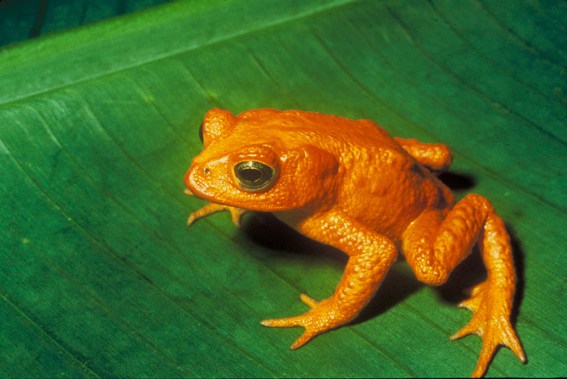
Number one. Arguably the most known of the lost amphibians researchers are seeking. Once native to Costa Rica, the golden toad (Incilius periglenes) went from abundant to extinct in just over one year. The frog was last recorded in 1989. Debate continues as to the reasons behind its vanishment including climate change and possibly chytridiomycosis. Photo courtesy of CI.
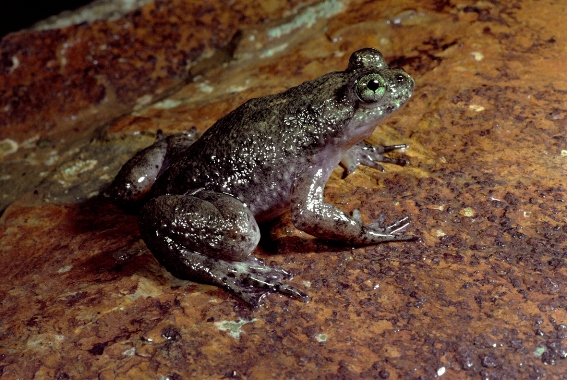
Number two. Two species of gastric brooding frog have not been seen in Australia since the mid-1980s. These frogs are of interest to researchers given their truly weird style of reproduction: females swallowed eggs and raised their tadpoles in their stomachs. When the frogs were ready to emerge they popped out of the mouth. Photo by: John Wombey provided by ARKive.
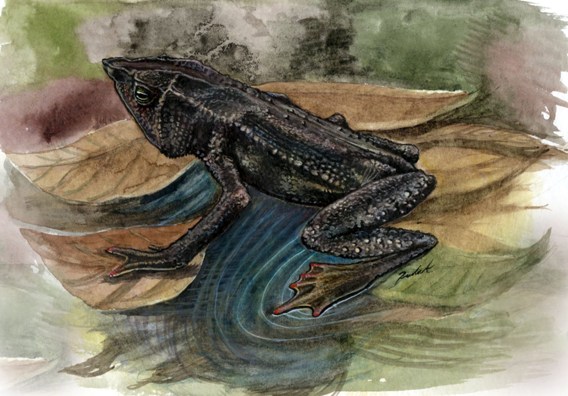
Number three. Colombia’s Mespotamia beaked toad (Rhinella rostrata) has not been seen for nearly 100 years. Illustration by: Paula Andrea Romero Ardila
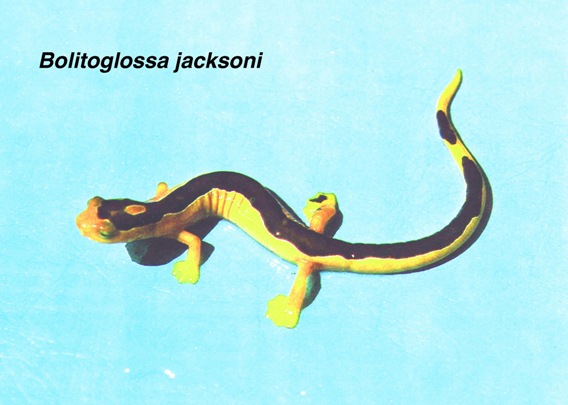
Number four. Not seen for 35 years, Jackson’s climbing salamander (Bolitoglossa jacksoni) will be searched for in Guatemala. Photo by: Dave Wake.
.

Number five.60 years have passed since the African painted frog (Callixalus pictus) has been seen in the Democratic Republic of Congo or Rwanda. No known photos exist of this little-know frog. Illustration from: Society for the Study of Evolution/ Reproduced in Evolution Vol 18, No. 3 (Sept 1964) pp. 458-467
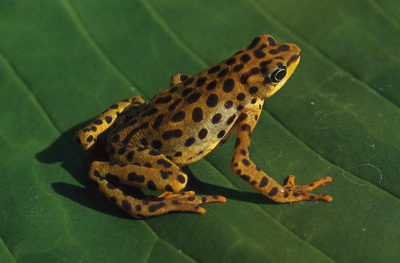
Number six.Researchers fear that chytridiomycosis has wiped out the Rio Pescado stubfoot toad (Atelopus balios) from Ecuador. This toad hasn’t been seen since 1995. Photo by: Luis Coloma
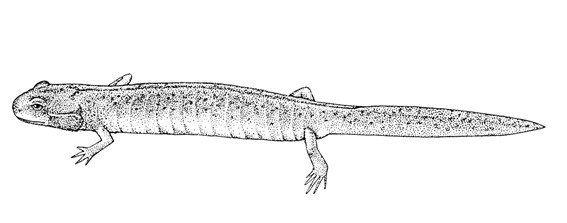
Number seven. This salamander hasn’t been seen for 101 years. Possibly remaining in Kyrgyzstan, Tajikistan or Uzbekistan, the species is known as the Turkestanian salamander (Hynobius turkestanicus). Illustration by: N.V. Panteleev/ Reproduced with permissions from Kuzmin S.L. 1999. Amphibians of the Former Soviet Union. Sofia: Pensoft Publ.
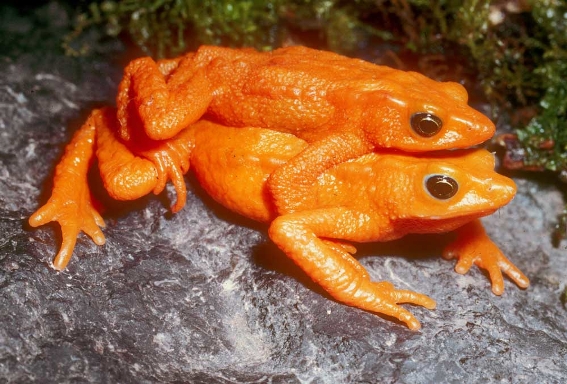
Number eight. Once present in a single stream in a cloud forest in Venezuela, the scarlet frog (Atelopus sorianoi) hasn’t been seen for 20 years. Photo by: Enrique La Marca.

Number nine. The hula painted frog (Discoglossus nigriventer) was last seen in 1955 in Israel. Photo by Professor Heinrich Mendelssohn.
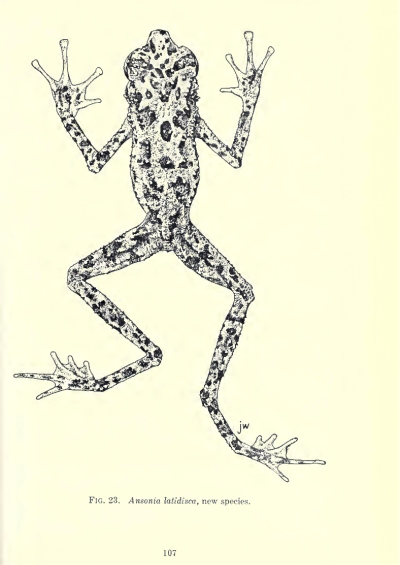
Number ten. Not seen since the 1950s this species was endemic to Borneo. Known as the Sambas Stream toad (Ansonia latidisca), researchers believe logging may have destroyed their water habitat. Illustration by: Fieldiana Zoology. Reproduced in Inger (1966).
To read more about the search for these ‘lost amphibians’ and others around the world:
Scientists hunt for ‘lost frogs’ around the globe
Related articles
30 frog species, including 5 unknown to science, killed off by amphibian plague in Panama
(07/19/2010) With advanced genetic techniques, researchers have drawn a picture of just how devastating the currently extinction crisis for the world’s amphibians has become in a new study published in the Proceedings of the Nation Academy of Sciences (PNAS). Studying frog populations using DNA barcoding in Panama’s Omar Torrijos National Park located in El Copé researchers found that 25 known species and 5 unknown species have vanished since 1998. None have returned.

Two new frogs discovered in Panama amidst amphibian plague
(06/06/2010) Researchers working to save Panama’s frogs from a fatal disease have stumbled on two species unknown to science. In Omar Torrijos National Park they found a bigger version of a common species, which is now known to be a unique species, and near the Colombian border they discovered a new frog that has been named after Spanish for DNA. Both frogs were discovered while researchers searched for frog populations in chytridiomycosis-infected areas. The highly contagious disease chytridiomycosis has devastated frog species worldwide and is believe to be at least in part responsible for some 100 extinctions of amphibians.
Frog in Australia goes from ‘extinct’ to very, very endangered
(03/08/2010) Facing habitat loss, pollution, climate change, and the devastating chytrid fungus, there has been little positive news about amphibians recently. However, a story out of Australia brings a much needed respite from bad news. In 2008 Luke Pearce, a fisheries conservation officer, stumbled on a frog that had been thought to be extinct for over thirty years. Not recorded since the 1970s, Pearce rediscovered the yellow-spotted bell frog (Litoria castanea) on rural Australian farmland in the Southern Tableland of New South Wales.